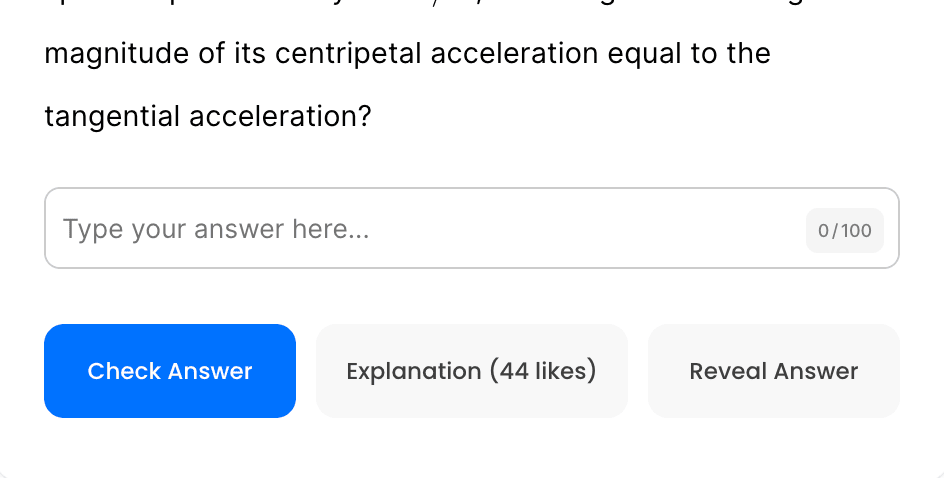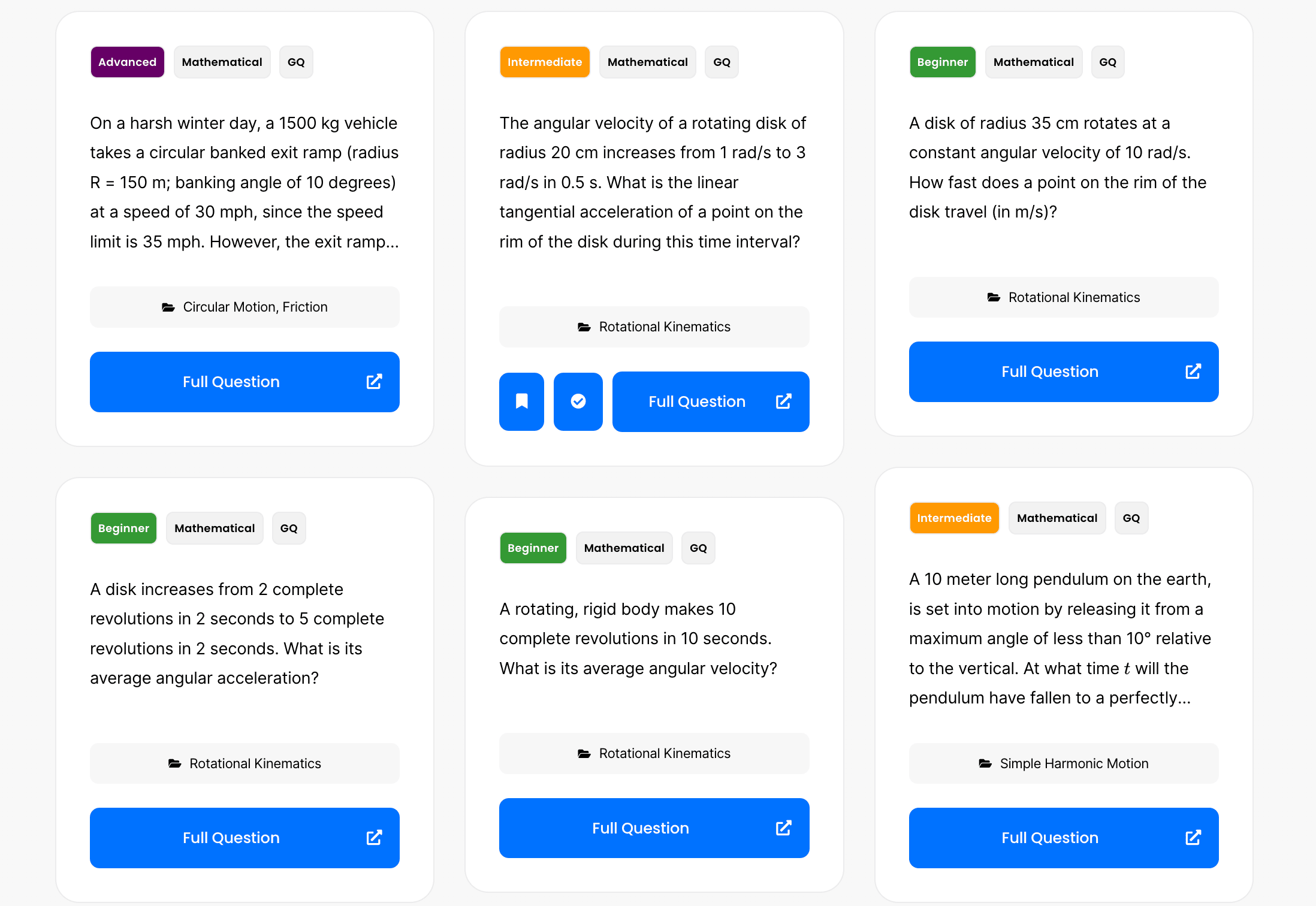Consider an object on a rotating disk at a distance \( r \) from its center, held in place on the disk by static friction. Which of the following statements is not true concerning this object?
A person is standing at the edge of the water and looking out at the ocean. The height of the person’s eyes above the water is \( h = 1.8 \, \text{m} \), and the radius of the Earth is \( R = 6.38 \times 10^6 \, \text{m} \). How far is it to the horizon (in meters)? In other words, find the distance \( d \) from the person’s eyes to the horizon. Note at the horizon, the angle between the line of sight and the radius of the Earth is \( 90^\circ \).)
A meter stick of mass [katex] .2 [/katex] kg is pivoted at one end and supported horizontally. A force of [katex] 3 [/katex] N downwards is applied to the free end, perpendicular to the length of the meter stick. What is the net torque about the pivot point?

Three identical reservoirs, \(A\), \(B\), and \(C\), are represented above, each with a small pipe where water exits horizontally. The pipes are set at the same height above a pool of water. The water in the reservoirs is kept at the levels shown. Which of the following correctly ranks the horizontal distances \( d \) that the streams of water travel before hitting the surface of the pool?
If I weigh \( 741 \) \( \text{N} \) on Earth at a place where \( g = 9.80 \) \( \text{m/s}^2 \) and \( 5320 \) \( \text{N} \) on the surface of another planet, what is the acceleration due to gravity on that planet?
An object of mass 2 kg is thrown vertically downwards with an initial kinetic energy of 100 J. What is the distance fallen by the object at the instant when its kinetic energy has doubled?
A ball is launched horizontally from a height. At the same time, another ball is dropped vertically from the same height. Which hits the ground first?
A car moving around a circular track with a constant speed has
A car travels \( 60 \) \( \text{km} \) at \( 30 \) \( \text{km/h} \), then \( 60 \) \( \text{km} \) at \( 60 \) \( \text{km/h} \). What is its average speed over the entire trip?
A driver is traveling at a speed of \( 18.0 \) \( \text{m/s} \) when she sees a red light ahead. Her car is capable of decelerating at a rate of \( 3.65 \) \( \text{m/s}^2 \). If it takes her \( 0.350 \) \( \text{s} \) to get the brakes on and she is \( 20.0 \) \( \text{m} \) from the intersection when she sees the light, will she be able to stop in time? How far from the beginning of the intersection will she be, and in what direction?
A ball falls straight down through the air under the influence of gravity. There is a retarding force \(F\) on the ball with magnitude given by \(F=bv\), where \(v\) is the speed of the ball and \(b\) is a positive constant. The ball reaches a terminal velocity after a time \(t\). The magnitude of the acceleration at time \(t/2\) is

The figure shows a truck pulling three crates across a rough road. Which of the following best describes the directions of all the horizontal forces acting on crate 2?
By continuing you (1) agree to our Terms of Use and Terms of Sale and (2) consent to sharing your IP and browser information used by this site’s security protocols as outlined in our Privacy Policy.
Quick Start Guide
AP physics 1, AP C, honors and advanced physics students.
Quickly filter questions by units and more.


Here’s guide to using 5 UBQ filters.
GQ = general question, MCQ = multiple choice, FRQ = free response.


Click the check or bookmark button.
Now you’ll be able to see completed or bookmarked questions at a glance!
Answer keys, personalized for you.

Phy will be responsible for grading your FRQs and GQs.
No more copy and pasting. Just solve and snap.
Questions for Mastery

By continuing you agree to nerd-notes.com Terms of Service, Privacy Policy, and our usage of user data.